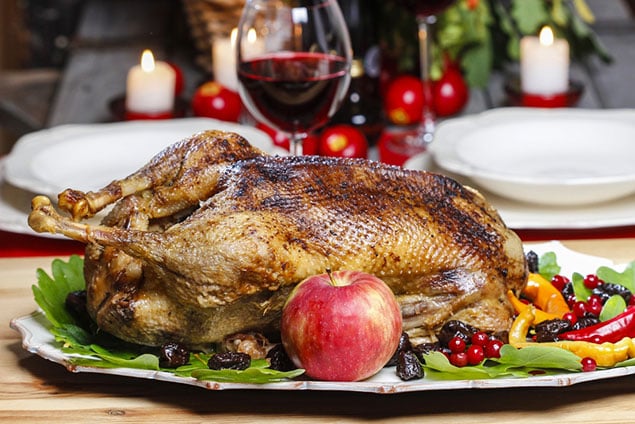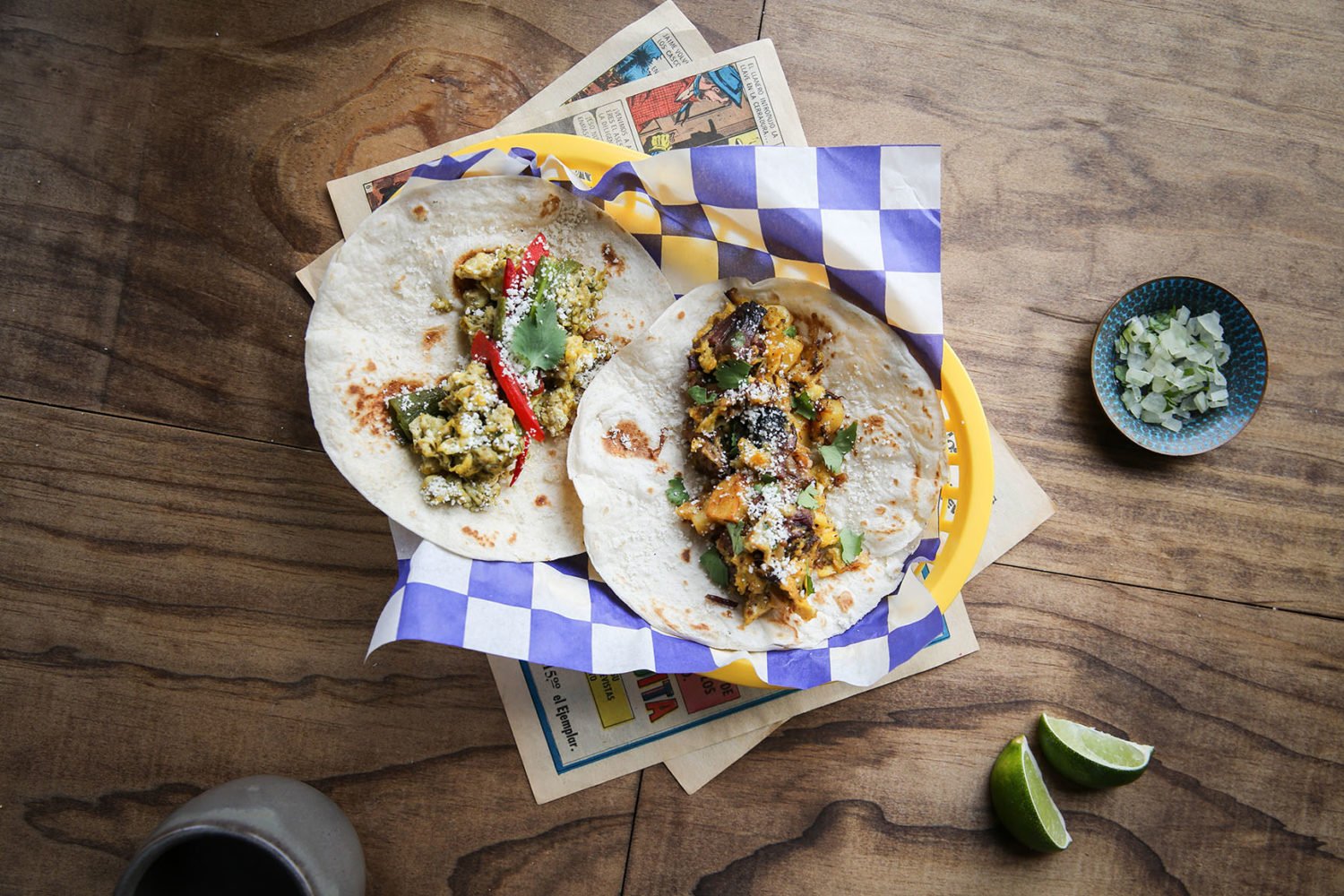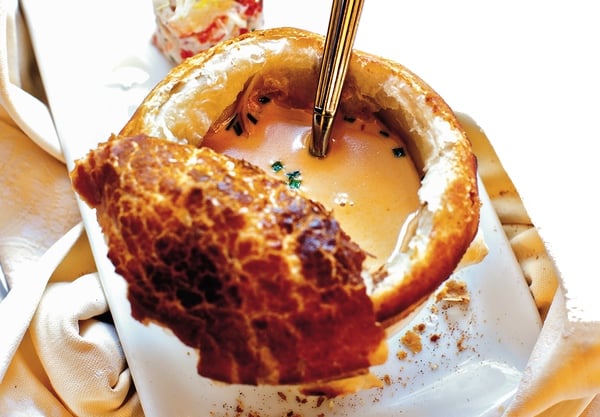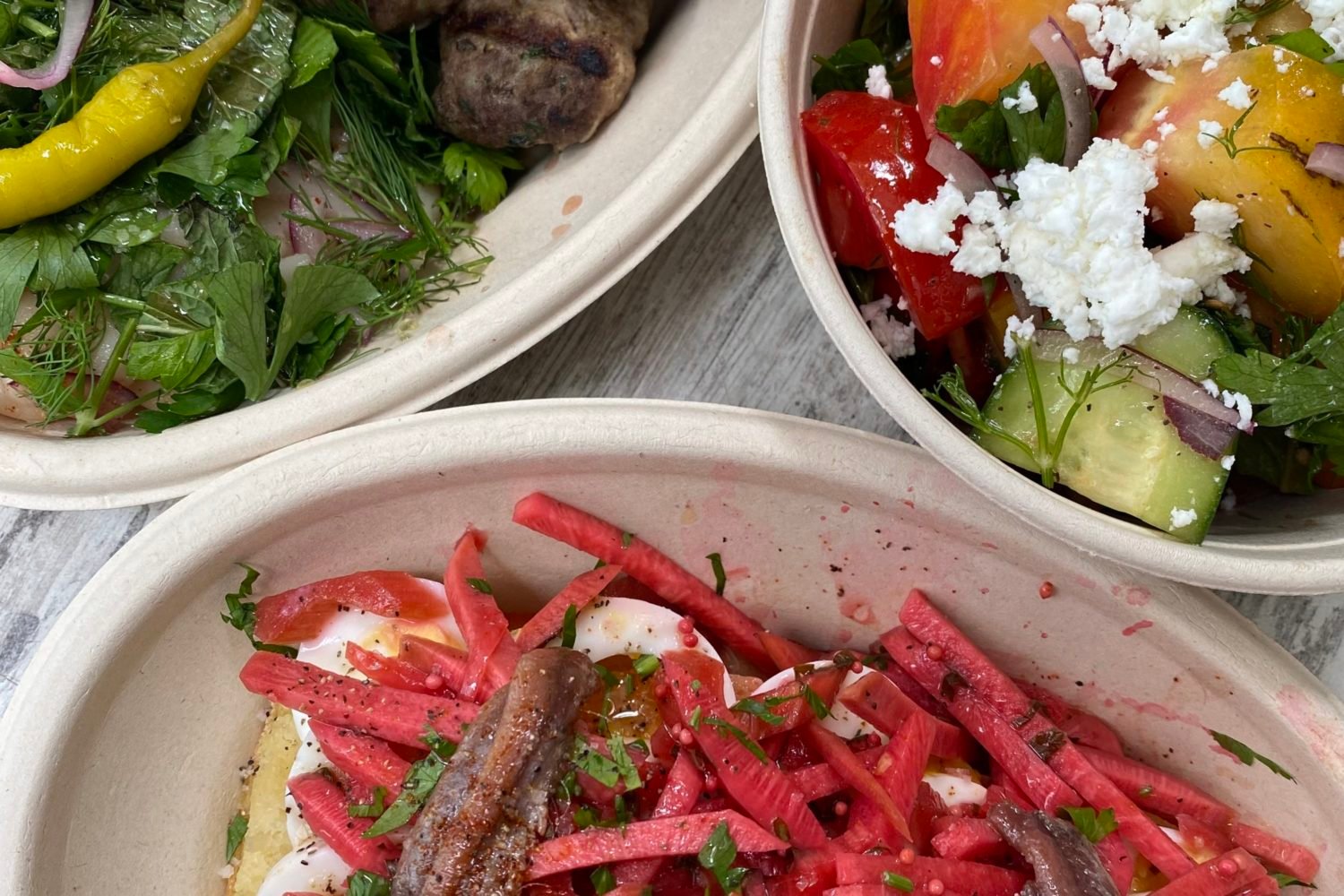Roasting a whole holiday goose sounds daunting, but it doesn’t have to be. The fatty nature of the bird means you’re in less danger of drying it out like its Thanksgiving cousin, and the rich meat doesn’t call for as many accoutrements. Red Apron Butcher meat master Nate Anda walked us through his straightforward method, and offered tips for cooking a perfectly crisp-skinned, moist meat honker (the size in mind is six to eight pounds). At a loss for where to find one? Call your local butcher, or pre-order one online from Anda.
Keep the surface tight.
Anda sets the oven at 400 degrees Fahrenheit, and then positions the 6 to 8-pound bird so that the skin stays firm and uniform as the fat renders. This will help the outer layer crisp and give it an attractive, even texture. To do it: Trim the excess fat around the cavity, pulling chunks off with your hands, and fold the wing tips under the goose. At the other end, fold the neck flap under the goose and secure it with a skewer or tooth pick.
Prick the skin so that the fat renders.
Geese are particularly fatty birds. While this makes them rich and delicious, you’ll want the excess to render (i.e. melt off) during roasting so it doesn’t overwhelm the meat. Before cooking, prick—don’t slice or jab—the skin with a sharp knife or roasting fork at a 25 to 30 degree angle. This will help the rendering process, which will yield about two cups. Anda recommends removing the liquid fat from the pan every 30 minutes to avoid frying the goose. Make sure to save it in a glass container for later use; it’s even tastier than duck fat, and can be used to fry potatoes, saute vegetables, or as a butter substitute.
Flavor the bird.
Just because it’s not (technically) safe to cook your stuffing in the cavity doesn’t mean you should forgo the area entirely. Anda seasons the center liberally with salt and pepper and fills it with a fennel bulb, red onion, and garlic bulb (all halved), plus sprigs of rosemary, thyme, and oregano. He then squeezes a whole lemon into the space for a citrusy kick, adds the rind in with the rest, and ties the legs together with butcher’s twine. You won’t eat the “stuffing,” but it’ll add flavor throughout the bird.
Reduce the heat.
After an hour of cooking at 400 degrees—which achieves a nice, crisp skin—turn the temperature down to 325 degrees for the next 1.5 to 2 hours so you can thoroughly cook the meat. You’ll want to pay attention to the color of the goose (ideally golden brown at the end), and temperature, which you can gauge by sticking a meat thermometer between the leg and breast, not touching the bone. The bird is done when it reads 180 degrees F.
Let it rest.
Cutting into your perfectly roasted goose too quickly will release the tasty juices. Let it rest on a cutting board for at least 20 minutes before carving. Anda likes to serve it with a simple gravy made from the pan drippings or fruit compote, plus a side of Brussels sprouts.















